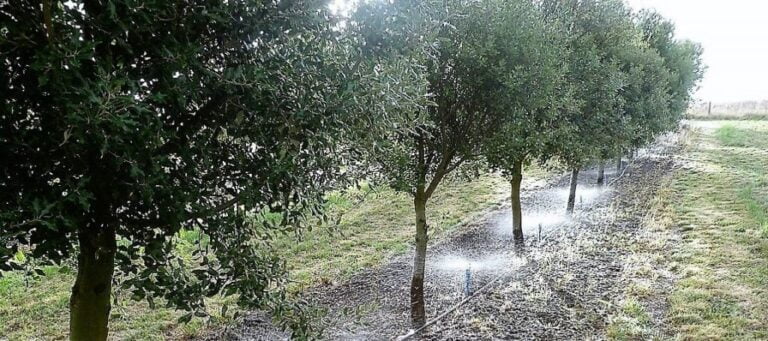How To Grow Truffles
This article provides valuable insight into the steps involved in truffle growing. The process of growing truffles is complex. The information provided below is not intended as a concise guide to establishing a farm.

Recent advances in truffle research signal positive results for new growers, as methodology on how to grow truffles has improved substantially in recent years.
Science continues to uncover new findings into the life-cycle of truffles.
Learning how to grow truffles
Cultivating truffles is complex. Successful, sustained production of this unique crop, requires a complete understanding of truffle biology. There are also several non-negotiables that must be adhered to, in developing the appropriate environment for the production of high quality truffles.
A reasonable return on an investment in truffle farming is achievable, if you follow the principles of due diligence, education and seeking professional assistance. This pathway will ensure success in the project.
What are truffles?
A truffle is the underground fruiting body formed by a group of specialised fungi. Truffle fungi establish a relationship with a host tree, known as a mycorrhizal symbiosis. They live externally on and around fine tree roots and develop a vast network of mycelium in the soil, formed by microscopic filaments called hyphae.
Active mycelium searches for and returns nutrients and enhanced water intake to the tree. In return the tree provides the fungus with sugars and starches from the process of photosynthesis. The fruit body (truffle) is formed when two compatible strains of mycelium fuse under the right conditions, and depending on the species, this may occur in spring, summer and autumn.
Where do truffles grow?
There are variable requirements among species. In this article, we will focus on the French Black truffle, globally the most widely studied and farmed species. This truffle is endemic to specific parts of Europe generally growing between elevations of 100-1000m (300-3600 feet). Typical climate zones are Mediterranean, Oceanic and Continental. Natural habitats are deep, well-draining, stony, calcareous, high pH (7.5-8.3) soils, on warm, exposed sites.
When growing this species in other parts of the world, farmers generally modify growing conditions, applying what has been learned from scientific studies of natural truffle grounds and the ecology of the truffle.
The site
Site selection is extremely important, involving a complex range of considerations including:
A site analysis visit from a qualified person is critical to determine suitability before investing in a project.
Truffle Soils
Truffle soils need to be extremely soft, loose and friable with a broad range of particle sizes. Loamy soils with reasonable even percentages of sand, silt and clay are best. Soils with clay contents higher than 35% are generally not suitable. The pH of the soil should be in the range of 7.5 – 8.3.
Truffle Soil Analysis
This is an essential part of site selection and should be carried out early in the process, as part of ‘proving’ eligibility of the site. Samples taken are sent to a laboratory for specific testing. An agronomist specialising in truffle culture, provides soil adjustment recommendations.
Truffle Growing CLimate
There are specific parameters for the ideal climate range. In general, warm summers and cold winters with preferably, some incidence of frost is preferable. Natural rainfall should be in the range of 700mm (28 inches) plus annually. Rainfall distribution should be reasonably even throughout the year, avoiding very wet winter environments.
Truffles are potentially a 30 year crop, therefore climate change considerations should play a large part in site selection decisions. A site must remain within the preferred climate range for the projected life of the project.
Truffle Farm Design
Detailed farm design considerations include:
truffle Soil preparation
This may be extensive depending on soil type, compaction issues and recommendations made for pH and structural adjustments. General treatments include deep ripping to open up compacted soils and spreading and combining of soil additives. Improved soils are generally left a minimum 6 months for adjustment, prior to planting trees.
Water supply/storage
A good water supply is essential for irrigations during warmer months. Water must be good quality with relatively low salinity readings. Storage may be a dam or large tanks. Supply may be water harvested from infrastructure roofing, a bore or licensed access to a creek or river.
Truffle farm fencing
Fencing may be required to keep out unwanted animals. Animals grazing the farm area will damage trees and re-compact soils, therefore fencing must be adequately designed to cope with the prevailing animal issues in the area.
Trees for growing truffles
Host tree selection decisions will be based on your learning, advice received, and the local environment.
The three main host trees used today for inoculation with French Black truffle are:
Inoculated truffle trees
It is critical to source the highest quality inoculated host trees produced by specialist nurseries. Historically many farms received poorly inoculated trees, hence had little success in producing truffles. It doesn’t matter how well you prepare the soil and farm in general, if you don’t start with the highest quality trees, you will likely not succeed.
Industry tree evaluation programs, based on independent analysis of trees are available in many countries.
Planting inoculated truffle trees
Preferably carried out in autumn in most environments, however may also be spring, particularly in areas with harsh winters. Insulated tree guards are used for first 2 years, protecting young trees from small grazing animals, wind, herbicides and excessive heat.
Truffle farm maintenance
Ongoing maintenance required, includes annual pruning, pest, disease and weed control as required, summer irrigation, general repairs and mowing grass inter-rows.
Harvest
Harvest period is winter (for this truffle), with truffles gradually ripening throughout the season. Production begins slowly, generally in year 4-5, gradually increasing each year, potentially reaching commercial quantities by year 12-14. Farmers harvest on a weekly or bi-weekly basis depending on maturity/productivity/size of the farm. Farmers systematically search row by row, with dogs trained to locate truffles by scent.
Learn more: Truffle pigs and dogs.
Post-harvest
Freshly harvested truffles are placed in refrigeration until processed, ideally within 24 hours. Truffles are washed, dried then inspected for imperfections such as insect damage and bacterial rot. Grading criteria involves aromatics, shape, size and extent of any damage if any.
Handling and packaging
When fully ripe, truffles have a short shelf life of 2-3 weeks, with ideal consumption window of 8-10 days. Some aroma and weight is lost each day once a truffle is removed from the soil. As aromatics diminish, so may the experience for the consumer, hence ideally, freshly harvested truffles need to be cleaned, graded, packed (in a cold chain system) and posted/delivered to their destination within 48 hours.
Marketing truffles
The farmer has time to explore and build a market for the product. Gradual growth in annual yield allows growers time to build local clients such as restaurants, cafes, farmers markets etc. in early years. Supply agreements with food distributors and exporters are formed as yield develops. Exciting opportunities exist for organically grown truffles as this yet to be developed niche market will attract premium prices.
Financial considerations
When researching how to grow truffles, the first investment a new industry entrant should make is in acquiring essential knowledge for truffle farming.
TruffleGrowing.com’s online course includes project cost analysis, return on investment projections and creating a financial plan. Each project will invariably be different regarding establishment and management costs.
FRENCH BLACK TRUFFLE (Tuber melanosporum)
The species is the main truffle planted in farming situations in Europe, Australia, USA, New Zealand, Chile, South Africa and other locations around the globe. When fully ripe, the French Black truffle has an intense, pungent aroma and earthy flavour. Its exterior (peridium) is dark and rough and the interior (gleba) is dark in colour with creamy white veins.
Protecting your investment
Cultivating truffles is reasonably complex, and successful production requires a complete understanding of truffle biology, farm establishment, maintenance and management.
Learning how to grow truffles through a comprehensive truffle growing course, should be the first and most important investment for a new industry entrant.
